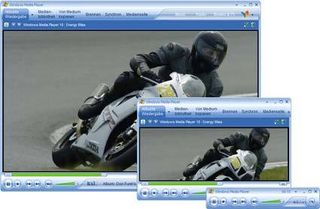THG Graphics Card Buyer's Guide
Video Playback

Video playback and Media Player visualizations can be accelerated by graphics cards, taking load off the CPU.
As we mentioned near the beginning of the article, video can be played back on practically any graphics card, as long as the correct codec is installed. Almost all graphics cards available today also offer special video acceleration features that handle effects such as resizing a video to fit a window, filtering and the like. The more tasks the graphics processor can handle, the less work is left to the CPU, improving overall performance. In the case of HDTV videos using very high resolutions, it is possible that the CPU alone isn't up to the task of decoding and playing back a video at all - and this is where the video processor can step in to help.
Video acceleration is also an important issue for notebooks, as a CPU usually requires more power than a graphics processor. As a result, a good video acceleration will do its part in lengthening the running time of a notebook. Video acceleration features also come into play when watching DVDs.
Recently, both ATI and NVIDIA have put special emphasis on video features, and practically every new generation of graphics processors comes with extended video functionality. ATI groups together these capabilities, which can be found in the new X800 and X700 line of cards, under the name "FullStream HD." More information is available here .
NVIDIA has equipped its newest chip family, the NV4x line, with a special, programmable video processor. This ensures support even for future video formats. Additionally, the video processor is designed to take some of the burden off the CPU when recording videos or during video encoding processes. More detailed information is available here .
Stay on the Cutting Edge
Join the experts who read Tom's Hardware for the inside track on enthusiast PC tech news — and have for over 25 years. We'll send breaking news and in-depth reviews of CPUs, GPUs, AI, maker hardware and more straight to your inbox.
Most Popular

